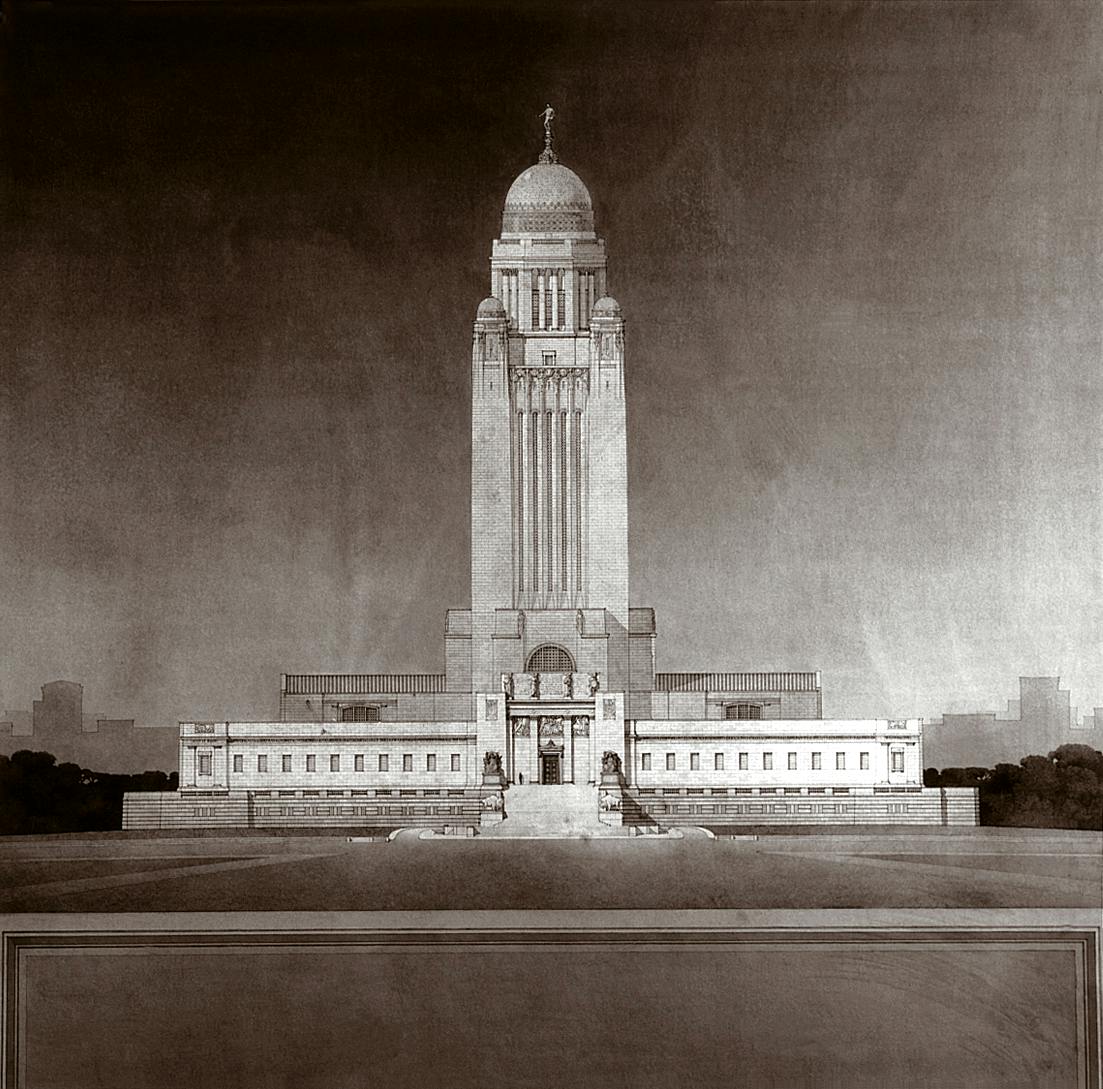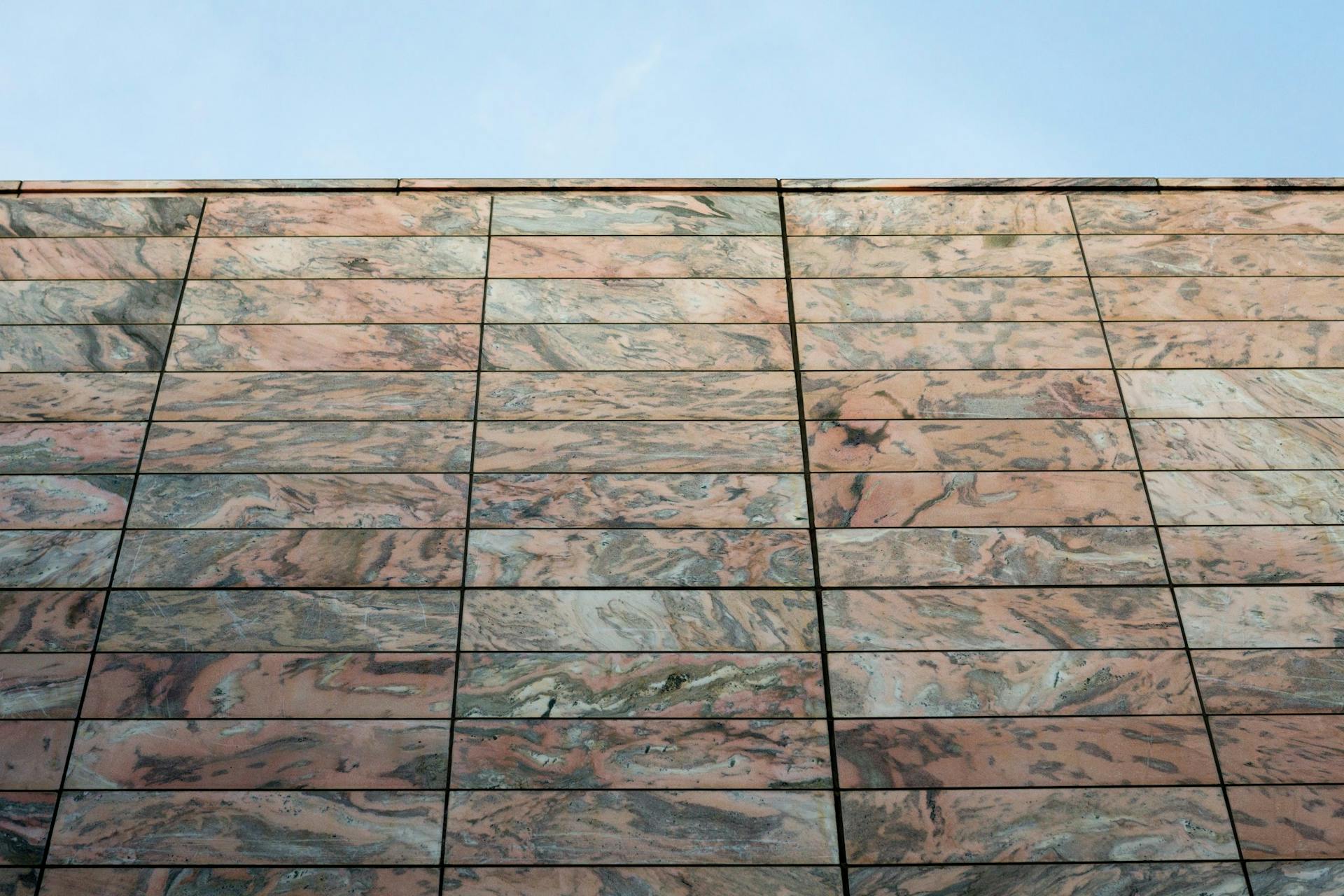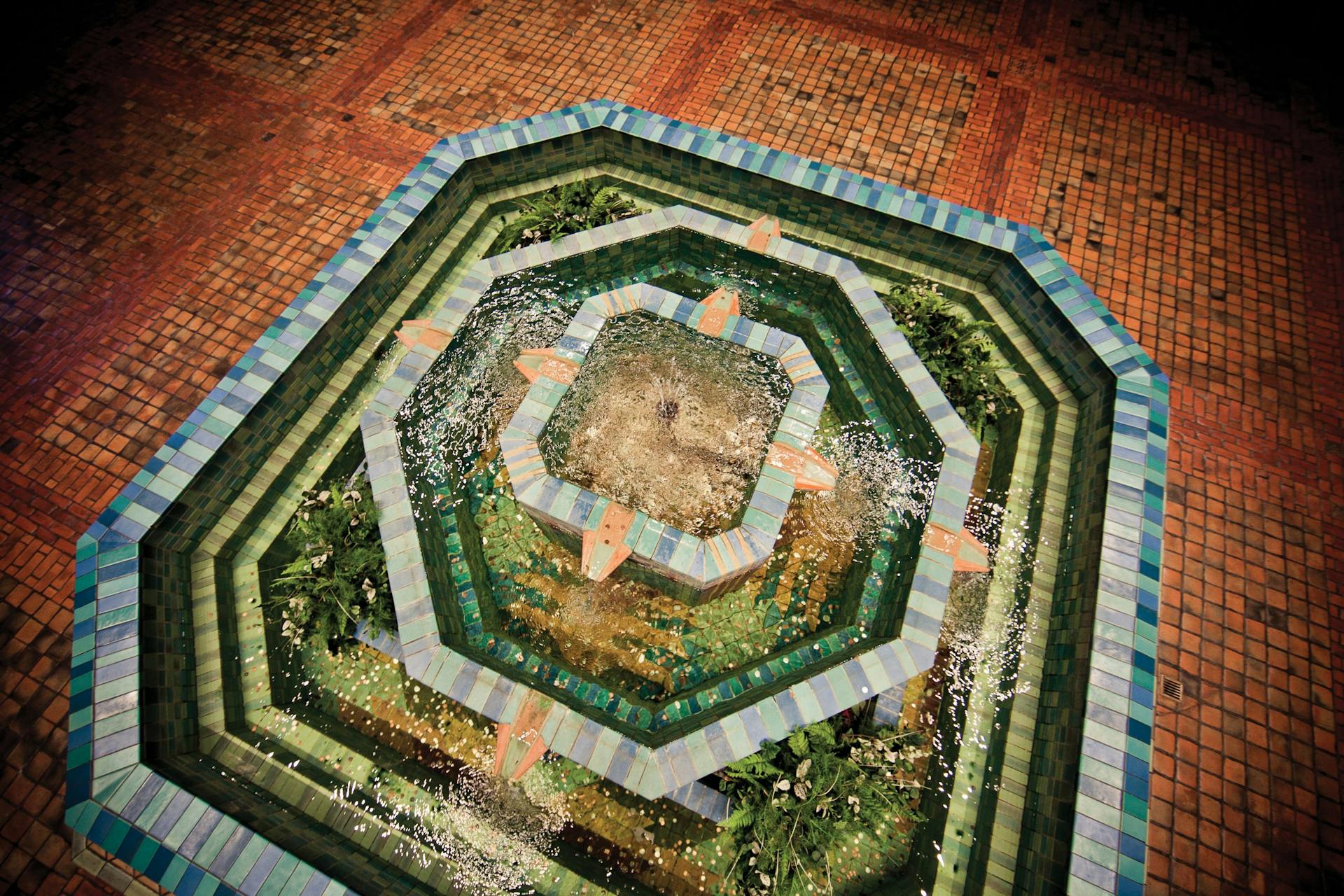Design Inspiration
As the designs for the Joslyn Building were taking shape in Omaha in the late 1920s, the Nebraska State Capitol building was under construction about 60 miles west in Lincoln. Designed by California architect Bertram Goodhue as a radical departure from typical state buildings of the time, the State Capitol was a dramatic form—a tower rising out of a spreading base. The building referenced the ultimate symbol of American modernity, the skyscraper, with distinct local characteristics. Goodhue utilized the Art Deco style for the building—sharp-angled geometry, smooth surfaces, and shimmering color. The Art Deco style is epitomized by skyscrapers like New York City’s Chrysler (1930) and Empire State (1931) Buildings, both under construction at the same time as The Joslyn. The influence of Goodhue’s work in Lincoln and the rise of Art Deco impressed and influenced architects John and Alan McDonald to completely recast the Joslyn Memorial, already under construction, in a modern style.

Themes
The Joslyn Memorial was so named as founder Sarah Joslyn meant the building to serve as a memorial to her husband, George. The east facade, specifically dedicated to him, carries a memorial identification, a dedicatory inscription, and two sculptural panels honoring his newspaper career. The subject matter of the six panels of the east entrance doors was chosen to express George Joslyn’s personal virtues and to pair the three traditional values of Faith, Hope, and Charity with individual qualities that lay behind his worldly success: Courage, Vision, and Industry.
The sculptor John David Brcin was commissioned to provide the sculptural program for the building, which includes eight relief panels with scenes of western frontier life and Native American culture. A stylized thunderbird motif is carried throughout the decorative scheme from the capitals of the exterior columns to the interior balcony friezes, fountain court decoration, and Founder’s Room coffered ceiling. Everywhere, the architects endeavored to fuse the expression of regional Indigenous peoples’ culture, the spirit of the modern, and the tradition of the past.

Materials
The streamlined exterior is composed of large expanses of Etowah Fleuri (Georgia Pink) marble. Quarried in Tate, Georgia, this distinctive metamorphic rock is characterized by waves or veining in shades of rose-pink, grey, and white that run through a salmon pink background. The three-level interior comprises some 38 marbles from around the world and includes stone from Italy, France, Belgium, and Morocco.

In the central fountain court, colorful faience tile from Ohio depicts the thunderbird motif on the fountain, in the frieze beneath the balcony, in the corners of the ceiling, and combined with leaf and flame forms in the light fixtures. The floor is Moravian tile from Pennsylvania and includes symbol for literature, music, architecture, and painting; the walls are Aquia sandstone from Virginia (Aquia is the principal material selected by George Washington for use in significant buildings such as the White House and the early stages of the US Capitol).

The Founder’s Room offers a departure from the materials that feature so prominently throughout the rest of the building. The walls are walnut inlaid with peroba and the floor is teakwood. The thunderbird motif dominates the wood ceiling and is reflected in the light fixtures. A fireplace in the room is Benou Jaune marble—the only marble in the space. The ivy design in the stained-glass windows was ordered by Sarah Joslyn as a special remembrance for her husband.
